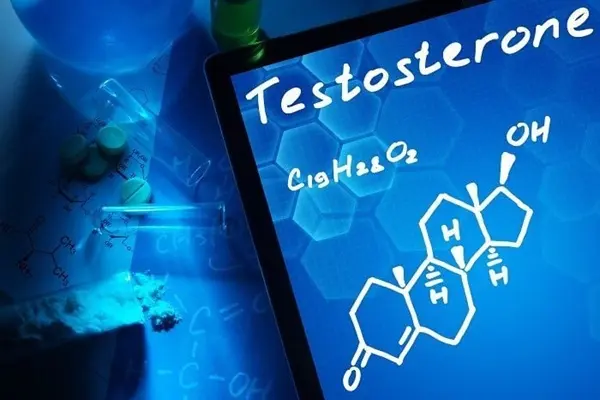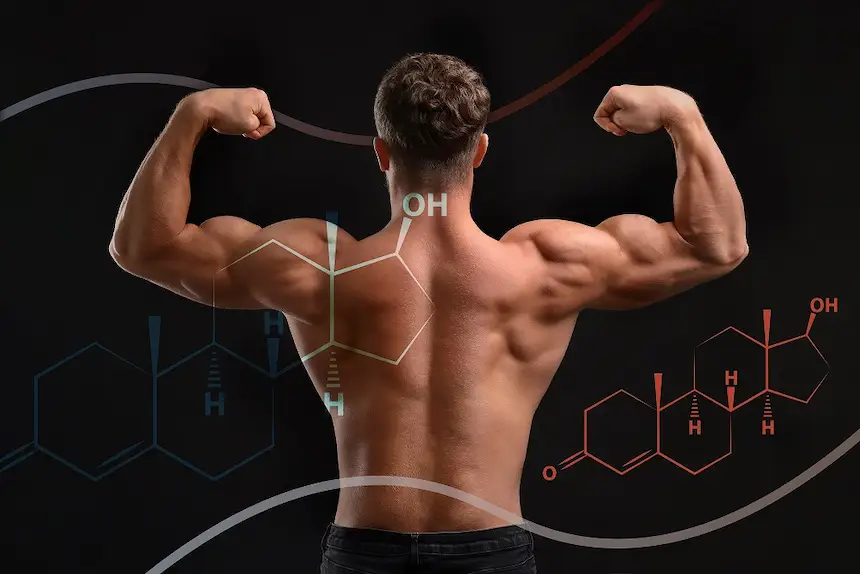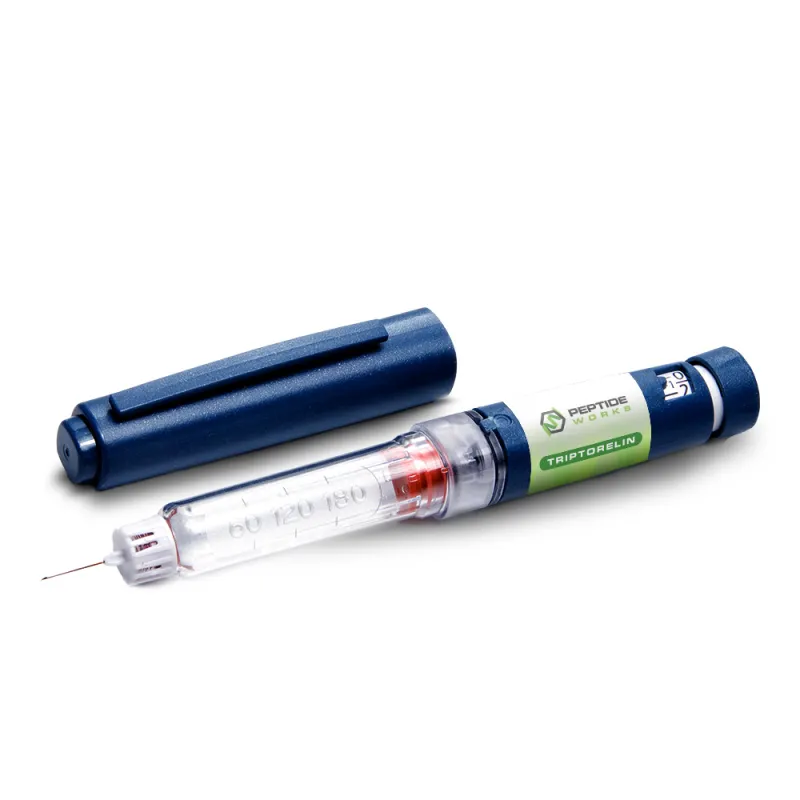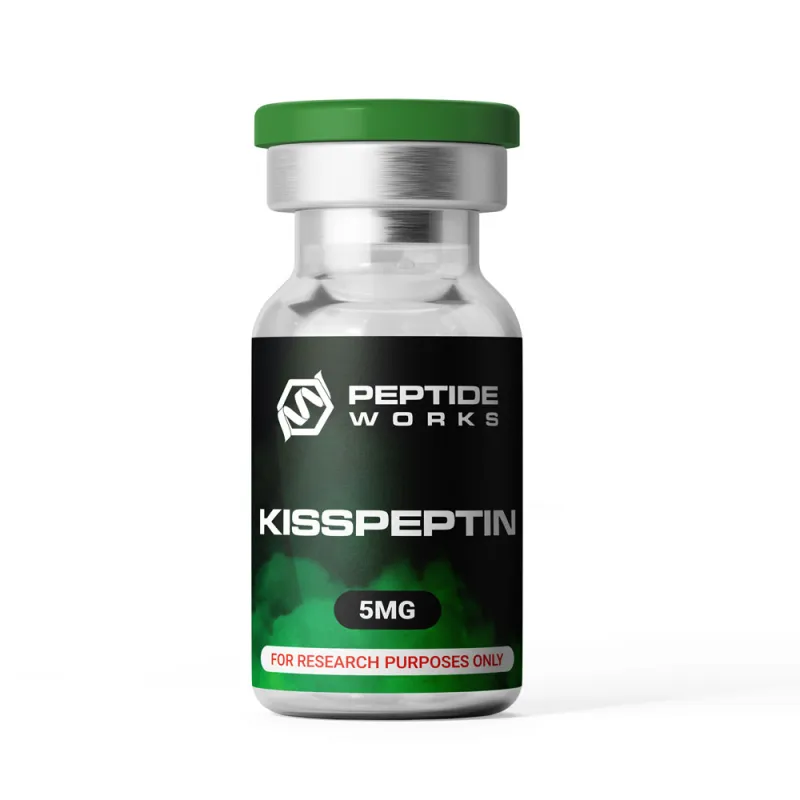
PROMO!
First order? Get 10% OFF with this code: 1storder
Written by

Testosterone levels are a major focus in hormone balance and endocrine research, peptides often play an important role in these studies. One peptide that draws particular attention is Triptorelin. Known for its strong influence on hormone pathways, some researchers describe it as a testosterone reducing peptide. But what does that really mean, and why is it so widely studied?
Triptorelin interacts with the endocrine system in unique ways that make it a key model for understanding hormone regulation.
In this article, we’ll look at how researchers explore its impact, why testosterone reduction matters in scientific studies, and how other peptides like Kisspeptin and Gonadorelin are investigated for their potential role in testosterone regulation.
Explore Triptorelin from Peptide Works, a testosterone reducing peptide that suppresses LH and FSH for sustained hormone regulation

Triptorelin binds to GnRH receptors in the pituitary gland. At first, this strong signal causes a sharp rise in luteinizing hormone (LH) and follicle-stimulating hormone (FSH). That leads to a temporary increase in testosterone, often called the flare period. After continuous exposure, the receptors switch off. The pituitary then reduces LH and FSH release, which lowers testosterone production in the testes.
In most studies, testosterone begins to fall within two to four weeks. Levels often reach what researchers call castrate range after that point. This step-by-step shift from flare to suppression is why Triptorelin is widely described as a testosterone reducing peptide in scientific literature.
Importantly, the initial response is not suppression but a short-lived surge in testosterone, known as the flare effect before the eventual decline
When Triptorelin therapy starts, testosterone levels rise at first instead of dropping. Researchers call this short-lived surge the testosterone flare effect. During this short phase, hormone levels rise before they begin to drop.
This temporary surge usually appears in the first one to two weeks after the initial injection and is considered a natural stage of how GnRH agonists work. The flare may lead to short-term changes such as increased libido, oily skin, mood swings, or fatigue. In clinical research, anti-androgens are sometimes administered during this period to counteract the surge, especially in studies on prostate cancer models.
While this rise is temporary, it highlights an important contrast in peptide research. Unlike Triptorelin, which ultimately lowers testosterone, peptides such as Kisspeptin and Gonadorelin are studied for their ability to raise it. Highlighting this contrast helps explain why different specific peptides are chosen depending on whether researchers want to suppress or stimulate testosterone.

In research on the hypothalamic–pituitary–gonadal (HPG) axis, peptides demonstrate very different outcomes depending on how they influence pituitary signaling. Studies on Triptorelin show that continuous stimulation of GnRH receptors leads to pituitary desensitization.This shift causes the pituitary to send out less LH and FSH, the hormones that usually stimulate the testes to produce testosterone. With fewer gonadotropins reaching the testes, testosterone production declines. For this reason, Triptorelin is often described in scientific literature as a testosterone reducing peptide.
Other investigations report a contrasting effect with Kisspeptin and Gonadorelin. Kisspeptin activates KISS1R receptors in the hypothalamus, which enhances GnRH release and drives higher secretion of LH and FSH. Gonadorelin, a synthetic GnRH analogue, stimulates the same pathway but typically produces a shorter response.
Both peptides increase testosterone output by amplifying gonadotropin signaling, a process that works in direct opposition to the suppressive pathway triggered by Triptorelin. Among the peptides that stimulate testosterone, Kisspeptin and Gonadorelin are often compared directly.
Discover Kisspeptin from Peptide Works, a hypothalamic peptide studied for stimulating GnRH release and enhancing natural testosterone production through KISS1R activation.

In research, both Kisspeptin and Gonadorelin are studied for their ability to stimulate testosterone production, but they act in different ways. Kisspeptin works through the hypothalamus by activating KISS1R, which promotes GnRH release and enhances pituitary signaling. Gonadorelin, on the other hand, is a synthetic GnRH analogue that acts directly on pituitary receptors.
The difference in signaling pathways leads to variation in strength and duration of testosterone stimulation.
The table below highlights key contrasts between the two peptides:
| Feature | Kisspeptin | Gonadorelin |
|---|---|---|
| Primary Action | Stimulates hypothalamus (KISS1R → GnRH release) | Direct GnRH receptor agonist |
| Effect on LH & FSH | Sustained increase in gonadotropin release | Rapid but short-lived increase |
| Impact on Testosterone | Strong and prolonged stimulation in studies | Noticeable but typically brief rise |
| Mechanistic Contrast to Triptorelin | Enhances pituitary output | Stimulates pituitary directly |
While both peptides increase testosterone, studies suggest that Kisspeptin produces a stronger and longer-lasting effect, whereas Gonadorelin tends to act more quickly but fades sooner.
This contrast further highlights how Triptorelin, as a testosterone reducing peptide, stands apart by silencing these same pathways instead of stimulating them. Beyond hormone changes, it is also important to note the secondary effects linked with testosterone reduction.
Shop Gonadorelin from Peptide Works, a synthetic GnRH analogue investigated for its rapid, short-term stimulation of LH, FSH, and testosterone output.
In research, testosterone reduction with Triptorelin is associated with several secondary changes. As testosterone levels fall, models often show reduced libido, fatigue, or shifts in mood. Some studies also describe hot flashes, changes in sleep, or alterations in body composition such as decreased lean muscle mass and increased visceral fat during periods of suppression.
These effects reflect how closely testosterone is tied to both metabolic and neuroendocrine balance, influencing energy levels, tissue repair, and tissue regeneration capacity. Looking at these outcomes alongside boosting effects gives a clearer picture of the differences between peptide types.
In research, peptides show opposing effects on testosterone. Triptorelin, a testosterone reducing peptide, lowers LH and FSH through pituitary desensitization, leading to sustained suppression.
By contrast, Kisspeptin and Gonadorelin boost signaling, producing short-lived testosterone rises. Comparing these outcomes helps researchers understand how different peptides shape hormone regulation.
| Feature | Triptorelin (Reducing) | Kisspeptin & Gonadorelin (Boosting) |
|---|---|---|
| Primary Action | Pituitary desensitization | Hypothalamic or pituitary stimulation |
| Effect on LH & FSH | Sustained decline | Short-term increase |
| Impact on Testosterone | Long-term suppression | Temporary rise |
All of these comparisons point toward how Triptorelin will continue to play a central role in future research and overall health studies related to potential risks of long-term hormone suppression.
The future of Triptorelin as a testosterone reducing peptide lies in its continued use as a model for hormone suppression in research. Studies already show how pituitary desensitization creates sustained reductions in testosterone, and future studies aim to clarify how long this effect can last and which pathways are most influenced.
At Peptide Works, we provide access to a wide range of high-quality peptides, including Triptorelin, for research purposes. All information in this article is shared for educational and research context only. These materials are not intended for human use.
All products discussed are supplied for research purposes only and are not intended for human use.
[1] Merseburger AS, Hupe MC. An Update on Triptorelin: Current Thinking on Androgen Deprivation Therapy for Prostate Cancer. Adv Ther. 2016 Jul;33(7):1072-93.
[2] Kumari R, Muneshwar KN, Pathade AG, Yelne S. Unveiling the Effects of Triptorelin on Endocrine Profiles: Insights From Healthy, Polycystic Ovary Syndrome, and Hypothalamic Amenorrhea Women. Cureus. 2023 Sep 5;15(9):e44752.
[3] Jayasena CN, Abbara A, Narayanaswamy S, Comninos AN, et al. Direct comparison of the effects of intravenous kisspeptin-10, kisspeptin-54 and GnRH on gonadotrophin secretion in healthy men. Hum Reprod. 2015 Aug;30(8):1934-41.
[4] George JT, Veldhuis JD, Roseweir AK, Newton CL, et al. Kisspeptin-10 is a potent stimulator of LH and increases pulse frequency in men. J Clin Endocrinol Metab. 2011 Aug;96(8):E1228-36.
[5] Thompson IM. Flare Associated with LHRH-Agonist Therapy. Rev Urol. 2001;3 Suppl 3(Suppl 3):S10-4. PMID: 16986003; PMCID: PMC147608
ALL CONTENT AND PRODUCT INFORMATION AVAILABLE ON THIS WEBSITE IS FOR EDUCATIONAL PURPOSES ONLY.
DISCLAIMER: These products are intended solely as a research chemical only. This classification allows for their use only for research development and laboratory studies. The information available on our Peptide Works website: https://peptide-works.com/ is provided for educational purposes only. These products are not for human or animal use or consumption in any manner. Handling of these products should be limited to suitably qualified professionals. They are not to be classified as a drug, food, cosmetic, or medicinal product and must not be mislabelled or used as such.
Peptide Works
Related Articles

How effective could Orexin Addiction Therapy be?
Have you ever wondered why some people find it so hard to stop addictive habits, even when they truly want

Can NAD Therapy Improve Cognitive Performance?
NAD Therapy is gaining attention in research for its possible role in brain health. NAD+ (nicotinamide adenine dinucleotide) is a

Enhancing Energy with NAD+ Supplements
Energy is the driving force behind focus, movement, and recovery. When cells have less energy to work with, the body